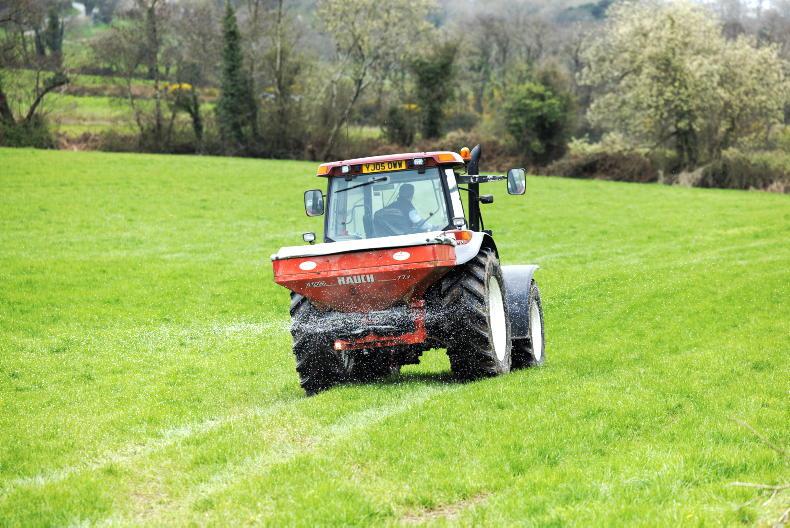Farmers will be banned from using unprotected urea in granular form from 2026 under the new rules of the nitrates action programme (NAP), the Department of Agriculture has announced.
All existing stocks of unprotected urea will have to be used by this year. The application of urea in liquid form will still be permitted.
The ban, originally proposed in October of last year, received widespread pushback from farm organisations.
It is one of eight new measures which will come into effect this year following an interim review of the fifth NAP.
An amendment to the good agricultural practice for the protection of waters regulations has been signed by Minister for Housing James Browne.
There will be a 5% reduction in the chemical nitrogen (N) allowance for grassland on higher stocked farms and a new lower chemical nitrogen allowance for extensively stocked livestock farms.
All farmers reseeding land will also have to include clover when reseeding perennial ryegrass-based swards.
Excretion rates
The Department has revised the nutrient excretion rates for calves to reflect their lower nutrient output, especially in their first 90 days.

Calves up to three months of age have an excretion rate of 1kg N.
Nutrient excretion rates for other cattle aged less than one year and for one- to two-year-old cattle are also updated to reflect the latest Teagasc research.
Cattle from 91 days of age up to one year of age have an N rate of 20kg. Cattle between the age of one and two years of age have a new rate of 55kg for heifers and 61kg for bullocks.
The Department has said that there will be recognition of the lower N excretion rate achieved by dairy farmers who opt to manage crude protein in the concentrates fed to their cows across the year.
The maximum crude protein content allowed in concentrates fed to cattle aged two years and over at grass between 15 April and 30 September is reduced from 15% to 14% and this requirement now applies to all farmers.
Derogation farms
The new rules will see the introduction of a provision that will allow the maximum nitrates derogation stocking rate to reduce to 220kg N/ha in areas where the Environment Protection Agency has identified a need for nitrates reduction measures as a priority to improve water, but that were not considered under the European Commission’s criteria for the two-year review of water quality that took place in 2023.

For these additional areas, the lower stocking rate limit will apply with effect from December 2025. The Department will shortly write to the individual farmers who may be affected by this change.
For derogation applicants, the maximum stocking rate will be limited to 170kg N/ha for land more than 30km ‘as the crow flies’ from the main farm holding unless demonstrable evidence is provided to the Department to show that this land is being farmed at an appropriate higher level.







 This is a subscriber-only article
This is a subscriber-only article










SHARING OPTIONS: